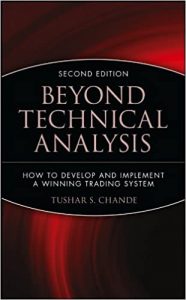Contents:
Customarily, a bear market continues until the last peak of the previous bull market has been recaptured. In other words, when many people want to buy securities but very few are selling, prices rise. The bear market, then, is measured retrospectively from the recent highs to the lowest closing price, and its recovery period is the lowest closing price to new highs.

Since bull markets are difficult to predict, analysts can typically only recognize this phenomenon after it has happened. A notable bull market in recent history was the period between 2003 and 2007. During this time, the S&P 500 increased by a significant margin after a previous decline; as the 2008 financial crisis took effect, major declines occurred again after the bull market run. The commonly accepted definition of a bull market is when stock prices rise by 20% after two declines of 20% each. A bear market is characterised by a 20% fall following a peak.
What Is a Bull Market? Definition, History, & Strategies for Investors
If you can stomach those drops, knowing that a bull market will one day be on the horizon, you can probably take on some additional risk. In that case, you might be able to consider riskier asset classes, like small-cap stocks, investments in emerging markets, or foreign currencies. When investors are optimistic about the state of the market, confident that the upward trend will continue, and expectant of investment growth, the market in question would be known as being “bullish”. The Sensex was at 3,377.28 in 2002, so it has sustained an increase of 500.7% over six years.
A Bull Market Is Coming. Should You Return to Growth Stocks? – The Motley Fool
A Bull Market Is Coming. Should You Return to Growth Stocks?.
Posted: Sat, 11 Feb 2023 08:00:00 GMT [source]
They tend to happen in line with strong gross domestic product and a drop in unemployment and will often coincide with a rise in corporate profits. Investor confidence will also tend to climb throughout a bull market period. The overall demand for stocks will be positive, along with the overall tone of the market. In addition, there will be a general increase in the amount of IPO activity during bull markets. Stock prices tend to increase in bull markets and fall in bear markets, where each begins with a 20% increase/fall from a near-term trough/peak.
Money rotates constantly and certain sectors will rise more than others, but eventually all sectors tend to rise in the context of a bull market. Buy the dip tends to be a popular trading strategy in a bull market since stocks eventually rise during the positive sentiment. Here are some tips to take into consideration when trading in a bull market.
Tips for Investing during a Bull Market
Short-selling allows investors to capitalize on cyclical bull market shifts in the context of a secular bull market but does require constant monitoring of the market. The longest-lasting bear market in history, longer than the one after the Great Depression, started after the financial crash in 2009. This market boom was driven by stable economic growth, soaring corporate profits, and low-interest rates. Unemployment was at an all-time low, and the quality of life was improving globally. A bull market is a cycle in which prices continue to rise over a certain period of time.

Bearishly, investors would assume prices will fall and are thus more likely to sell, driving prices down. During a bear market, investors tend to be pessimistic about the stock market, and may be nervous about their portfolios. Their fears can cause them to sell stocks, hold cash and seek out alternative investments like bonds, precious metals, real estate or money market funds—rather than stocks. In this period, negative sentiment starts to fade as business conditions improve and economic data becomes stronger. The steady flow of good news encourages more and more investors to move back in, which sends prices higher.
Table of Contents
Eventually, investors begin to find stocks attractively priced and start buying, officially ending the bear market. The ability to maximize the potential of the instruments available in any market is essential to achieving success. The use of long positions in stocks, ETFs, and call options is appropriate in bull markets and periods of strong market performance. Short selling, put options, and short or inverse ETFs, on the other hand, are appropriate for bear markets and allow investors to profit on the market’s downturn. A bull market is a term to describe a sustained period in which the prices of securities or assets continue to rise.
When a market, instrument, or sector is on an upward trend, it is generally referred to as a bull market. First, a bull run may last long enough for a significant proportion of investors to believe it is ending, therefore the market reaches exhaustion and no buyers remain. Second, a bull run can end with an unexpected disaster, such as the 2020 Coronavirus pandemic, which swiftly ended the bull run preceding it by halting business activities and raising unemployment. The retracement additions method involves taking advantage of small, localized dips in the otherwise upward trending market to buy securities only when prices are dropping. One common method is the buy and hold technique, where an investor buys securities when they expect a bull run to take effect, and sit back while the value of their assets increases. Most commonly this is in reference to the stock market, but it can apply to anything that is traded in a virtual market space, including bonds, real estate, and even currencies.
Some techniques are commonly paired with preparing for a recession before and after regular stock market hours or during NYSE holidays, so it’s a good idea to pay attention to the pros and cons of doing that. Investors love a bull market because of the potential to see gains in their investments. However, there’s still a degree of volatility as with any market. A market where prices have been rising over time – and haven’t fallen by more than 20% from their most recent peak. Investors can reap profits from a bullish market if they make sensible investment decisions based on market research and expectations.
- They tend to happen in line with strong gross domestic product and a drop in unemployment and will often coincide with a rise in corporate profits.
- If the idea of a bear market coming in and wiping out years of gains makes you feel sick, then conservative investments may be right for you.
- It is most commonly used to refer to the stock market, but can also refer to the bond, real estate, currency, and commodity markets.
- Spread bets and CFDs are complex instruments and come with a high risk of losing money rapidly due to leverage.
As expansion continues and matures, it will inevitably experience a slowdown, and we will see interest rates rising as the phase changes. Bull markets can apply to various financial markets, including commodities, shares, currencies and indices. While they are often brought to a conclusion by a tangible negative result such as poor earnings or economic figures, often the tide of opinion can reverse a bull market. Because of this, it is difficult to spot when a bull market might be beginning or finishing. If the market is instead on a sustained downward trajectory, it is called a bear market because bears are in the ascendancy. Bull markets are usually typified by wide-ranging optimism and confidence, with positive news driving more gains and negative news more likely to be overlooked.
Bankrate.com is an independent, advertising-supported publisher and comparison service. We are compensated in exchange for placement of sponsored https://forexbitcoin.info/ and, services, or by you clicking on certain links posted on our site. While we strive to provide a wide range offers, Bankrate does not include information about every financial or credit product or service. The value of shares and ETFs bought through a share dealing account can fall as well as rise, which could mean getting back less than you originally put in. 84% of retail investor accounts lose money when trading CFDs with this provider.

The most long-running bull market in modern US history began in 1982 and ended in the dotcom crash of 2000, with a brief upset occurring in the crash of 1987. During this 18-year ‘secular’ bull market – secular meaning one lasting for over five years – the Dow Jones Industrial Average averaged annual returns of 16.8%. The bull market was even more pronounced on the tech-heavy NASDAQ, whose value grew fivefold between 1995 and 2000. Regardless of what the market is doing, you should maintain a long-term focus to cultivate long-term wealth. While it can be a smart idea to invest when stocks are cheap, it’s unwise to try to time the market. A bear market occurs when prices in the market fall by 20% or more.
This is because a large part of financial market activity is influenced by investor psychology. NerdWallet strives to keep its information accurate and up to date. This information may be different than what you see when you visit a financial institution, service provider or specific product’s site. All financial products, shopping products and services are presented without warranty. When evaluating offers, please review the financial institution’s Terms and Conditions. If you find discrepancies with your credit score or information from your credit report, please contact TransUnion® directly.